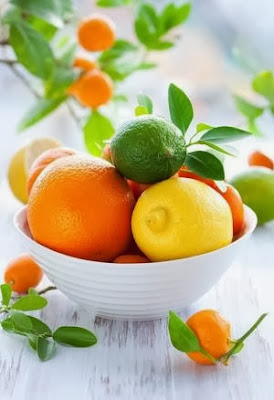Friday, 29 November 2013
Citrus Fruits have the Highest Content of Citric Acid
Citrus fruits, especially lemon and lime, have the highest content of citric acid. Citric acid is an organic acid that is not required in the diet. However, it is beneficial for people with kidney stones.It inhibits stone formation and breaks up small stones that are beginning to form in the kidneys. The more citric acid in your urine, the more protected you are against formation of new kidney stones. Eating citrus fruits and drinking an eight-ounce glass of orange juice daily may help prevent the painful disease that strikes most men aged 40 to 65. Individuals with a history of kidney stones should avoid highly processed foods and dairy products. Do consume at least two quarts (or more) of water daily.
Saturday, 23 November 2013
Cashew Fruits is known as Paradise Fruits
The cashew actually is a tree in
the family Anacardiaceae which generates a seed that is harvested as the cashew
nut. Its English name derives from the Portuguese name for the fruit of the
cashew tree, caju, it is now widely grown in tropical climates for its cashew
apples and nuts. The cashew fruit or cashew apple is one of the very rare
fruits with seeds on the outside of the fruit. It has a very strong, intense
and exclusive smell that can be detected even in perspiration and urination.
The Cashew fruit is soft with a
"flimsy" skin, therefore, it is not widely distributed but the nuts
are removed in its place and sold commercially. This fruit tastes somewhat
sweetish-pungent/astringent. If you ever do come across a cashew fruit, never
try to take out the nut from the fruit as it has a chemical
"Urushiol" that can reason of minor irritation/rash to the skin. The
laborious cleaning process makes cashew nuts to be one of the most pricey of
all nuts.
The cashew nut is a well-liked
snack and food source. Cashews, unlike other oily tree nuts, contain starch to
about 10% of their weight. The brown seed actually is the ‘cashew nut’. Normally the nut in
separated from the rest of the fruit and the fruit itself is discarded. The
nuts are then sun dried and sold out. Cashew fruits outer skin gets charred and
gives a distinct smokey flavor to the cashew nuts.
This is more effective than other
nuts in thickening water-based dishes like as soups, meat stews, and some
Indian milk-based desserts. Several southeast Asian and south Asian cuisines
use cashews for this remarkable characteristic, rather than other nuts. The cashew
nut shell is toxic, that is why the shell is removed before it is sold to consumers.
Cashew fruits nutrition facts have a very high vitamin C content, called to be
5x more than an orange. It has more than a few B vitamins, and rich in
manganese, potassium, copper, iron, magnesium, zinc and selenium. Cashew nuts,
can lead to complications or allergic reactions, contains gastric and
intestinal soluble oxalates, albeit less than some other tree nuts; people with
a tendency to form kidney stones may need moderation and medical guidance
Cashew nuts are produced in
tropical countries because the tree is very frost sensitive; they have been
adapted to various climatic regions around the world between the latitudes of
25°N and 25°S. Asian countries became the largest producer of cashew fruits.
African coutnries were major producers in 1980’s. India, vietnam, Nigeria are
considered largest producer of cashew fruits.
Several parts of the cashew plant are used in the traditional medicine of the Patamona of Guyana. They grind the seeds into a poultice for treating snakebites, apply nut oil to cracked heels or as an antifungal agent, and use the fruits, bark, and leaves for many other purposes including anti-fungal activity, for sores and rashes, or as an antipyretic, and for antidiarrheal applications.The leaf extracts with petroleum ether and ethanol inhibited growth of quite a few species of bacteria and fungi. Chemicals recognized in cashew shell oil have been assayed against Streptococcus mutans, a bacterium responsible for several dental cavities, and start to have activity in vitro against this and other Gram positive bacteria.


































